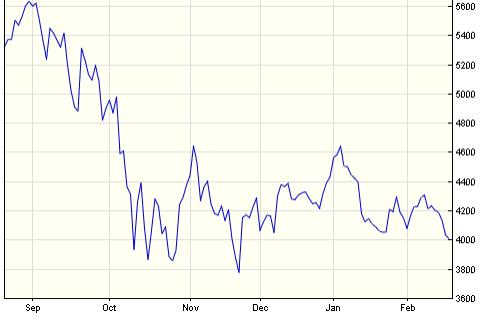
At the point when we glance back at the historical backdrop of monetary business sectors, not many occasions loom as extensive as the 2008 securities exchange crash. This wasn’t simply a terrible day on Money Road or a transitory dunk in stock costs. It was an out and out monetary emergency that began in the US yet immediately spread all over the planet, departing a path of financial obliteration afterward.
Outline of the 2008 Securities exchange Crash
We really want to lay everything out to get a handle on the size of the 2008 accident genuinely. Picture the mid 2000s:
● The U.S. economy was blasting.
● House costs were taking off.
● It appeared as though everybody was getting rich.
The securities exchange was hitting new highs, and a general sensation of good faith was in the air.
Yet, underneath this blushing surface, inconvenience was fermenting. Banks were distributing contracts like sweets on Halloween, even to individuals who couldn’t actually manage the cost of them. These dangerous credits, known as subprime contracts, frequently had precarious terms. They could begin with low regularly scheduled installments that unexpectedly increment following a couple of years.
Why were banks so anxious to give out these hazardous credits? Indeed, they had figured out how to bundle these home loans into complex monetary items called contract upheld protections (MBS). They then, at that point, sold these to financial backers around the world, spreading the gamble all over. It appeared to be a mutually advantageous arrangement:
● More individuals could purchase homes.
● Banks could make more credits without keeping the gamble on their books.
● Financial backers could acquire great returns.
Simultaneously, the U.S. government was effectively reassuring house purchasing. Loan fees were kept low, making acquiring modest and simple. Everything appeared to be an ideal recipe for everybody to get rich.
Be that as it may, as we presently know, this place of cards was standing by to implode. Also, in 2008, that is precisely exact thing occurred.
The Air pocket Explodes
Like all air pockets, the lodging bubble needed to ultimately pop. The principal difficult situations showed up in 2006 when house costs began to even out off. By 2007, they were falling. Unexpectedly, that multitude of individuals with precarious home loans wound up having some issues. They couldn’t manage the cost of their installments when they reset to higher rates and couldn’t sell their homes for more than they owed.
As additional individuals defaulted on their home loans, contract supported protections began to lose esteem. Banks and financial backers overall who had purchased these protections started to overreact. No one realized who possessed what or how much these protections were worth.
This vulnerability immediately spread all through the monetary framework. Banks became careful about loaning to one another, expecting that different banks could hold useless home loan upheld protections. This prompted a credit freeze that took steps to stop the whole worldwide monetary framework.
Key Variables Behind the 2008 Market Decline
To comprehend the reason why the 2008 accident was so serious, we really want to take a gander at a few key factors that met up to make the powerful coincidence:
The Lodging Air pocket
The foundations of the emergency can be followed back to the U.S. real estate market. In the years paving the way to 2008, house costs rose extraordinarily. This made a feeling that land was a can’t-lose venture. Individuals were purchasing houses they couldn’t manage, accepting they could constantly sell them for a benefit later.
Subprime Home loans
Banks and home loan moneylenders assumed a critical part in energizing the lodging bubble. They started offering home loans to borrowers with unfortunate records or low livelihoods – individuals who generally would have attempted to get a home credit. These “subprime” contracts frequently accompanied complex terms, similar to low starting “mystery” rates that would reset to a lot higher rates following a couple of years.
Contract Upheld Protections
Banks didn’t simply keep these unsafe home loans on their books. All things considered, they packaged them together into complex monetary items called contract upheld protections, which were then offered to financial backers all over the planet. The thought was that pooling many home loans together would fan out and limit risk.
Credit Default Trades
Monetary foundations began exchanging credit default trades (Cds) to additionally confuse matters. These were basically insurance contracts against the disappointment of home loan upheld protections. Be that as it may, dissimilar to customary protection, you didn’t have to possess the basic resource for purchase a Discs. This prompted a circumstance where the all out worth of CDSs far surpassed the worth of the real home loans they depended on.
Absence of Guideline
The monetary business effectively campaigned for less guideline in the years paving the way to the emergency, which implied that large numbers of these unsafe practices continued unrestrained. For instance, the Glass-Steagall Act, which had isolated business and venture banking since the Economic crisis of the early 20s, was revoked in 1999. Banks utilized contributors’ cash to participate in less secure venture exercises.
Low Loan costs
After the website bubble burst in 2000 and the 9/11 assaults 2001, the Central bank kept loan costs low to animate the economy. While this aided prod financial development, it likewise supported unreasonable acquiring and chance taking.
Arrogance and Ravenousness
There was an overarching conviction that the great times could continue forever. Monetary organizations faced increasingly more gamble challenges quest for higher benefits. Numerous property holders took out contracts they couldn’t manage, accepting house costs would continue to rise until the end of time.
The Dominos Begin to Fall
As the real estate market started to decline, the breaks in this framework began to show. The primary significant shock came in Walk 2008 when venture bank Bear Stearns, which had vigorously put resources into contract upheld protections, imploded. JPMorgan Pursue purchased Bear Stearns for a small part of its previous worth in an arrangement worked with by the Central bank.
Yet, this was only the start. All through the late spring of 2008, an ever increasing number of property holders defaulted on their home loans. The worth of home loan upheld protections plunged, and monetary establishments overall ended up holding resources worth definitely short of what they had thought.
The circumstance reached a critical stage on September 15, 2008. On this day, Lehman Siblings, one of the most established and biggest speculation banks in the U.S., sought financial protection. This sent shockwaves through the worldwide monetary framework. The financial exchange fell, with the Dow Jones Modern Normal encountering its biggest one-day point drop in history on September 29, falling 777 focuses.
The breakdown of Lehman Siblings denoted the second when the monetary emergency, which had been working for a really long time, transformed into an out and out alarm. Banks quit loaning to one another for the most part, expecting that some other organization could be the close to come up short. The credit markets, which are significant for the everyday working of the economy, basically froze.
The Effect of the 2008 Accident on Worldwide Monetary Business sectors
The impacts of the 2008 accident weren’t bound to Money Road or even the US. The emergency immediately spread around the world, influencing monetary business sectors and economies internationally. How it’s done:
Securities exchange Declines
Financial exchanges all over the planet plunged. In the U.S., the S&P 500 fell 57% from its top in October 2007 to its box in Walk 2009. Comparative decays were found in significant business sectors like the U.K’s. FTSE 100, Japan’s Nikkei, and Germany’s DAX.
Banking Emergency
Banks overall confronted a serious liquidity emergency. Many had put resources into U.S. contract upheld protections and presently had resources worth undeniably not exactly anticipated. A few banks fizzled, while others required government bailouts to get by.
Credit Crunch
As banks became careful about loaning, credit turned out to be scant and costly. This impacted organizations, which attempted to get the required advances, and people, who found it harder to get contracts or different kinds of credit.
Financial Downturn
The monetary emergency prompted an extreme financial slump, frequently called the Incomparable Downturn. In the U.S., joblessness came to 10% by October 2009. Numerous different nations likewise experienced rising joblessness and declining monetary result.
Cash Variances
The emergency prompted critical developments in cash markets. The U.S. dollar at first fortified as financial backers looked for place of refuge resources yet later debilitated as the full degree of the U.S. monetary issues turned out to be clear.
Products EffectProduct costs, which had been blasting, crashed as worldwide interest fell. Oil costs, for instance, tumbled from a high of $147 per barrel in July 2008 to only $32 in December of that year.
Worldwide Exchange Decline
As credit turned out to be scant and request fell, worldwide exchange volumes declined pointedly. This especially impacted trade arranged economies and developing business sectors.
European Obligation Emergency
The 2008 accident uncovered basic shortcomings in a few European economies, prompting the European obligation emergency. Nations like Greece, Ireland, and Portugal required bailouts from the European Association and the Worldwide Money related Asset.
The Public authority Steps In
With the possibility of a total monetary implosion, states and national banks overall made an exceptional move. In the US:
● The Upset Resource Help Program (Canvas): In October 2008, Congress passed a $700 billion bailout bundle called the Disturbed Resource Alleviation Program. This cash was utilized to purchase upset resources from banks and other monetary foundations to settle the monetary framework.
● Central bank Activities: The Central bank, America’s national bank, went to a few unprecedented lengths:
○ It cut financing costs to approach zero to energize getting and monetary movement.
○ It fired purchasing up pained resources for infuse cash into the monetary framework, an interaction known as quantitative facilitating.
○ It gave crisis advances to monetary establishments to forestall their breakdown.
● Monetary Upgrade: In February 2009, Congress passed the American Recuperation and Reinvestment Act, a $787 billion financial boost bundle. This included tax breaks and expanded government spending to support financial action.




